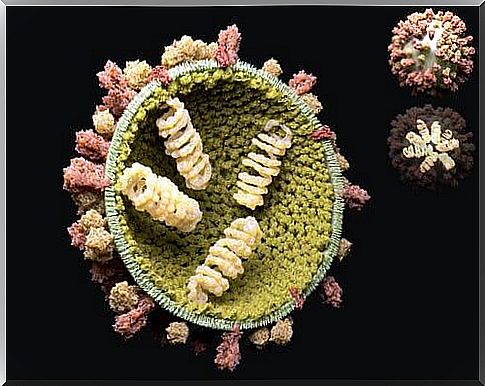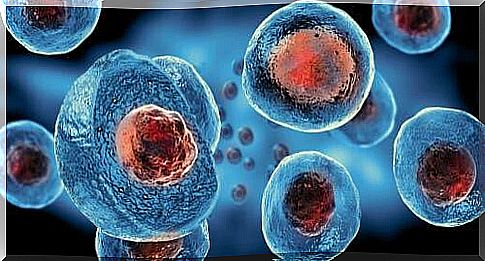The Reproductive Cycle Of Viruses
The reproductive cycle of viruses is a process by which they use a living organism to multiply. Once they are successful, they damage that same organism to multiply in another body.

The reproductive cycle of viruses is complex and interesting. These particles do not have cells and therefore cannot reproduce autonomously. To do this, viruses need a host, that is, a living organism. Inside this organism they are able to replicate, while outside they are susceptible to destruction.
There are two types of virus reproduction cycles:
- Lithics
- Lysogens
The lytic reproductive cycle takes place when the virus enters the cell and immediately transcribes its genetic material there. In other words, it attacks the cell quickly and directly.
In the lysogenic cycle, on the other hand, viruses insert themselves into the DNA of their host cell. In doing so, they become very difficult to detect and multiply without noticing. In other words, they camouflage themselves in the structure they infect.
Stages of the virus reproduction cycle
Remember that viruses are structures made up of nucleic acids and a few proteins only. These are therefore very small units. Science doesn’t classify them as living things, but it doesn’t classify them as dead things either. Despite this, they perform two functions typical of living things: they relate to each other and they reproduce.
Viruses contain a genetic molecule that is almost always surrounded by an envelope made of proteins and sugars. When they reach a cell of their host, they enter the nucleus and sequester it, that is, they put it at the service of their own interest. Then they start to multiply.

Adsorption and penetration phase
The first phase of the virus reproduction cycle is adsorption or fixation. This corresponds to the moment when the virus comes into contact with the organism it will infect. This usually happens randomly, for example when someone sneezes and there is a person nearby.
Then, the virus recognizes the receptors in the cell where it is going to be hosted, and when it does, it attaches itself to the membrane of that cell. Then begins the second phase of the virus’s reproductive cycle, which is penetration. It consists for the virus to inject its genetic material into the cell where it arrived.
The process is similar to what happens with a syringe, but in this case, what the virus injects is genetic information. To do this, it must break down the cell membrane, which it does by releasing an enzyme.
Multiplication and assembly phase
Once the microorganism has entered its host’s cell and sequestered it, the next phase of the reproductive cycle begins: multiplication. It consists of the replication of its genetic material. The virus seeks to create the components necessary for the formation of new viral particles.
Since there are different types of viruses, this process also takes place in different ways. When the multiplication process is complete, assembly begins. It involves taking the different parts and putting them together into a structure that forms new virions, or virus bodies.

Release phases
The last phase is the release of new viral bodies, or virions, outside the cell. These make a journey until they find a new cell to accommodate them, to repeat the entire reproductive cycle.
Some types of viruses perform this release process by force. That is, they manage to get out by breaking the membrane of the cell from which they originated. If viruses have a lipid envelope, then they go through a process called “budding”. In this case, they take part of the membrane of the host cell and cover themselves with it.
As you can see, in this last phase the viruses break down the cell membrane and this leads to the death of the cell. This process is repeated over and over again: they progress through the body, killing cells one after the other.
The body activates the immune system to fight them off and prevent them from doing further damage. If it does not succeed, it is necessary to resort to medication to win the battle. And if they fail, too, serious illness and even death ensue.
Why is it important to understand the reproductive cycle of viruses?
Understanding this reproductive cycle allows us to think about how to protect ourselves from this organism. Prevention against these particles is important because there are not many effective antiviral drugs. Viral illnesses can be mild, like a cold, but also serious, like AIDS.
The more we understand their reproductive process, the more likely we are to fight them. Vaccines and drugs for their treatment derive from this knowledge, hence their importance.









